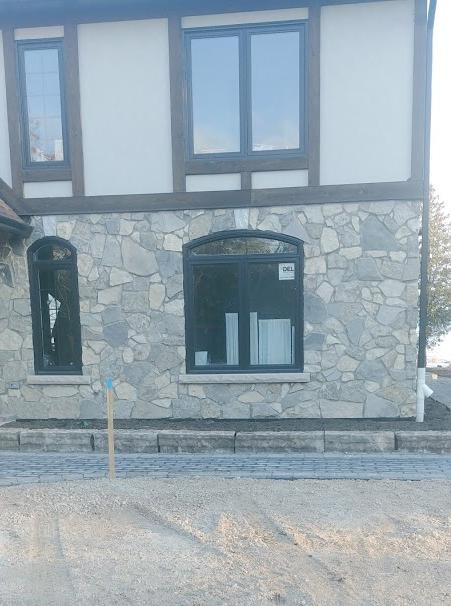How to lay flagstone on concrete
Our flagstone is a beautiful natural material. But it is irregular in shape and also may naturally vary in thickness.
If you need to lay our irregular flagstone on existing concrete, we recommend laying it on a cement and sand bed. In this case, it is easier to level the flagstone and fill the gaps between stones (if necessary with cement and sand mix.
If flagstone is of permanent thickness and regular in shape (usually square or rectangular), laying it over an existing concrete surface is straightforward on polymer-modified thinset. You can also use polymer-modified thinset for laying irregular flagstone if you cut the pieces to make them tightly fit, like in the picture below.

Polymer-modified thinset is a type of adhesive mortar that contains polymers, which enhance its bonding strength and flexibility. It is NOT RECOMMENDED if the thickness of the flagstone varies.
To lay flagstone of uniform thickness with the use of polymer-modified thinset, follow the next steps:
- Prepare the surface: Clean the existing concrete thoroughly to remove any dirt, debris, or loose material. If there are any cracks or uneven areas, you may need to repair or level them before proceeding.
- Apply a bonding agent (optional): Depending on the condition of the concrete and the specific thinset manufacturer's recommendations, you may choose to apply a bonding agent or primer to enhance the bond between the concrete and the thinset.
- Mix the polymer-modified thinset: Follow the manufacturer's instructions to mix the thinset mortar with water. Use a drill with a mixing paddle attachment to achieve a smooth and consistent mixture.
- Apply the thinset: Use a notched trowel to spread the thinset over the concrete surface, ensuring a uniform layer with the appropriate thickness. The size of the notched trowel will depend on the size and thickness of the flagstones you are using.
- Place the flagstones: Press flagstones firmly into the thinset mortar, ensuring they are level and properly aligned. Use a rubber mallet or a wooden block and a hammer to tap the flagstones into place (if needed) gently.
- Check for level and alignment: Use a level and a rubber mallet to ensure that the flagstones are level and aligned properly. Adjust them as necessary.
- Grout the joints (optional): Once the thinset has cured, you may choose to fill the joints between the flagstones with grout for a more finished look. Follow the manufacturer's instructions for mixing and applying the grout.
Remember to consult the manufacturer's guidelines for the specific polymer-modified thinset you are using, as they may have specific instructions or recommendations for flagstone installations. Additionally, local building codes and regulations may also apply, so it's a good idea to check with your local authorities or consult a professional if needed.
Back To News
